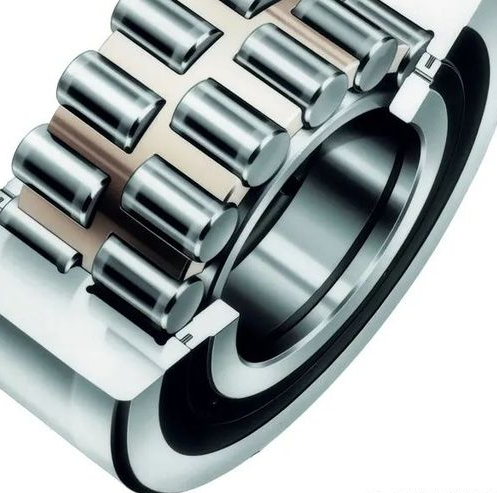CONTACT US
Zhejiang waxing electromechanical co.LTD.,Factory located in Shandong,Headquarters located in Zhejiang,China.
Bearing is an important part of modern mechanical equipment, its main function is to support the mechanical rotating body, reduce the friction coefficient in the process of movement, and ensure the accuracy of rotation. Rolling bearings are generally composed of four parts: outer ring, inner ring, rolling body, and cage. According to the shape of the rolling body, rolling bearings are divided into ball bearings and roller bearings. Although there are many types of rolling bearings, and there are differences in their structural types, tolerance levels, material selection, and processing methods, the basic manufacturing process is similar. The following is a brief introduction to the processing technology of bearing parts: First, bearing manufacturing process sequence
(1) bearing parts manufacturing - bearing parts inspection - bearing parts demagnetization, cleaning, rust prevention - bearing assembly - bearing finished product inspection - bearing finished product demagnetization, cleaning - bearing finished product oiling packaging bucket finished product warehousing.
(2) The ring is an important part of rolling bearings. Due to the wide variety of rolling bearings, the ring size, structure, manufacturing equipment, and process methods of different types of bearings are different. In addition, because of the many processing procedures, complex technology, and high requirements for processing precision of the ring, the processing quality of the ring has an important impact on the accuracy, service life, and performance of the bearing.
The raw materials for the manufacture of bearing rings are cylindrical rods or pipe materials. At present, according to the different forming processes, rolling bearing rings generally have the following manufacturing processes.
(1) bar material: blanking - forging - annealing (or normalizing) - turning (cold molding) - heat treatment quenching, tempering - grinding - part inspection - demagnetization, cleaning - submit assembly.
(2) bar material, pipe material: blanking - cold rolling forming - heat treatment quenching, tempering - grinding - parts inspection - demagnetization, cleaning - submitted assembly.
(3) pipe material: blanking - turning molding - heat treatment quenching, tempering - grinding - parts inspection - demagnetization, cleaning - submit assembly
(4) bar material: blanking - cold (warm) extrusion molding - turning - heat treatment quenching, tempering - grinding - parts inspection - demagnetization, cleaning - assembly three, ring forming method At present in ring processing forming methods are mainly the following: forging forming, turning to form, cold rolling forming and cold (warm) extrusion forming.
(1) forging molding through forging processing can eliminate the inherent defects of the metal, improve the metal structure so that the metal streamline distribution is reasonable, good metal tightness. Forging forming processing technology is widely used in bearing forming processing, common forging forming methods are hot forging, cold forging, warm forging.
(2) Stamping molding process is a kind of advanced process method that can improve the material utilization rate, improve the density of the metal organization, and keep the metal flow linear. It is a kind of chip-free processing method. When the stamping process and forging process are used, the precision of the product is not only affected by the precision of the equipment but also affected by the precision of the forming die.
(3) the traditional turning molding technology is the use of a special lathe, using the centralized process method to complete the molding process. Some products with complex appearance and high precision requirements are increasingly adopting numerical control turning molding technology.
Four, the selection of bearing processing oil-bearing accessories in addition to the use of hot forging process, usually according to the different process to choose the appropriate metal processing oil to improve the accuracy of the workpiece and processing efficiency.
(1) cold forging: the use of cold heading forming oil or strong shrinkage oil to improve the accuracy of the workpiece.
(2) stamping: because the stamping process is limited by the precision of the mold, special stamping oil is selected to extend the service life of the mold, so as to ensure the precision of the workpiece.
(3) turning: the precision of the turning process is mainly related to the feeding speed and tool strength of the cutting technology. The selection of special lathe cutting oil can effectively reduce the cutting temperature and prevent the occurrence of thermal deformation.The above is a brief introduction to the processing technology of bearing rings. Bearing processing is developing towards the direction of the high utilization rate of metal materials, high production efficiency, and high forming accuracy.

Copyright © 2025 Zhejiang waxing electromechanical co.LTD. | All Rights Reserved Design
Hello, please leave your name email or WhatsApp here before chat online so that we won't miss your message and contact you smoothly.